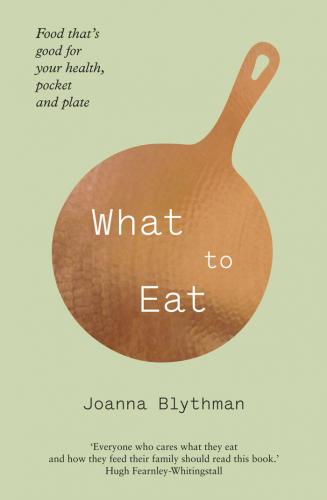Contents
Introduction
Chapter 1 - Vegetables
Asparagus
Aubergine
Peppers
Potatoes
Spinach and Swiss chard
Tomatoes
Broccoli, cabbage, cauliflower and other brassicas
Carrots and other root vegetables
Celery
Courgettes, marrow, squash and pumpkin
Green beans and runner beans
Herbs
Lettuce and other salad leaves
Mushrooms, cultivated and wild
Onions, garlic, shallots, leeks and spring onions
Peas, broad beans, mangetouts and sugarsnaps
Chapter 2 - Meat
Chicken and other poultry
Beef
Lamb and mutton
Pork, bacon and ham and wild boar
Venison
Veal
Rabbit
Sausages
Chapter 3 - Dairy
Milk and cream
Butter, ghee and buttermilk
Yogurt and yogurt drinks
Cheese
Ice cream
Chapter 4 - Fish
Cod and other white fish
Salmon and other oily fish
Prawns and other crustaceans
Mussels and other shellfish
Chapter 5 - Fruit
Apples
Avocados
Bananas and other tropical fruits
Cherries
Citrus fruits
Currants
Grapes
Nectarines, peaches and apricots
Pears
Plums, greengages and damsons
Pomegranates
Raspberries, blackberries and blueberries
Rhubarb
Strawberries
Chapter 6 - Larder
Eggs
Grains
Breakfast cereals
Bread
Pasta
Nuts and seeds
Dried and candied fruits
Pulses
Sugar and other sweeteners
Oils
Margarines and spreads
Soya foods
Chocolate
Salt
Spices and aromatics
Lists
Acknowledgments
About the Author
By the Same Author:
Copyright
Introduction
One night I was talking to a friend who was complaining about how hard she found it to shop for food. She was tight for cash, she explained, which made it difficult to afford the more ethical, progressive food she aspired to. She tended to shop on the way home from work, when only one smaller-format chain supermarket with a limited, overpriced selection, heavily skewed to convenience food, was still open. And that was only half the problem. Tired and uninspired by the dullness of the food on offer, she still had to dream up ideas for something to cook when she got home, then prepare it, and fit all that in with other activities, like going to the gym and doing the washing. Net result? ‘I’m not eating as well, or as healthily, as I’d like to,’ she said. ‘Food is just so complicated.’
This got me thinking. Is food really that complicated, or does it just seem that way? Surely there must be a clear, practical way to help people recognize and locate food that’s good in the broadest sense of that word: food that’s healthy, affordable, doesn’t trash the environment, exploit producers or cause unnecessary animal suffering, and, last but not least, tastes great?
So I wrote this book, a distillation of many disparate types of information about common foods that are not yet, as far as I know, brought together in any other place. Being impatient and, like many people, often short of time, I am a great believer in executive summaries, so any reader can cut to the chase, so to speak, by reading my 20 guiding principles for eating good food.
But broad generalities can’t answer many of the pressing food dilemmas of the day, so all the foods we eat commonly are then discussed in detail, either individually, or in their family groups. Each section is free-standing. What to Eat is a reference book after all, so you can dip into the section on breakfast cereals, say, without having first read the one on grains. This inevitably means that there is some repetition, but of course you can skip over that.
To steer readers in the direction of the best food – what to eat – I have dished up some unsavoury facts about the worst stuff – what not to eat. This isn’t meant to put you off eating, just remind you of why it’s worthwhile seeking out something better.
Food is a contentious subject, so as well as picking up lots of useful information and the odd flash of inspiration, anyone who reads this book will get a mini crash course in the live debates in this field. What to Eat looks at food from a 360-degree angle (or at least takes a few purposeful steps in that direction). I hope it will help anyone, anywhere, make the best possible all-round choice, irrespective of personal circumstances.
The 20 principles of
eating, made simple
Base your diet on real, unprocessed food
This is the bedrock principle of this book, and you can’t go too far wrong if you follow it. Nature is a very clever, intricate system and natural foods in their whole, unprocessed form have an intrinsic nutritional integrity. We know this because humans have been eating them for centuries. We don’t yet, and may never, fully understand all the complex interrelationships between the major and minor nutritional components that go to make up familiar foods such as eggs, meat, fruits, vegetables and grains, but we do know that they act in synergy, supporting and enhancing one another, adding up to one wholesome entity. If you choose mainly unprocessed, or only minimally processed food, and regularly eat a variety of different foods from all the major food groups, then you really don’t need to worry too much about being healthy.
See
